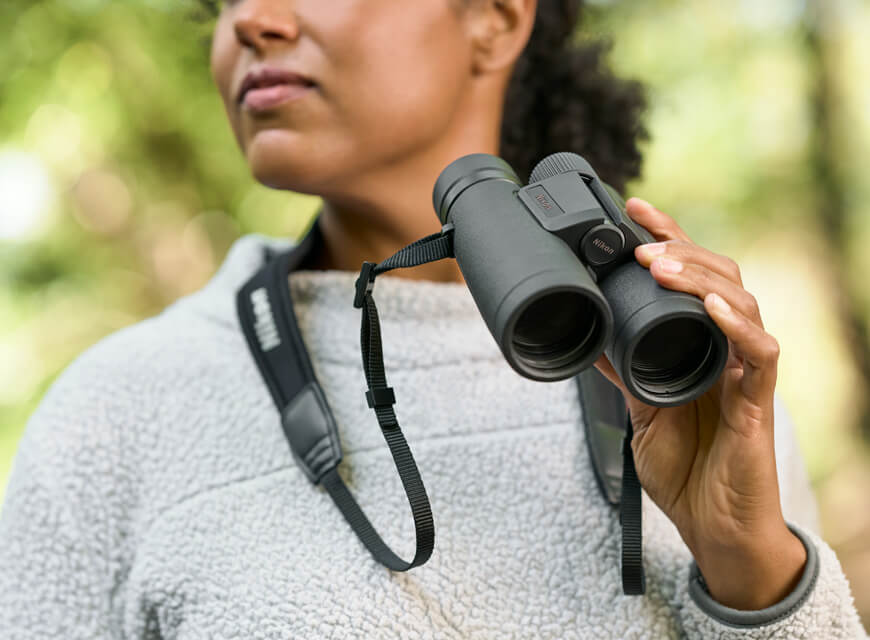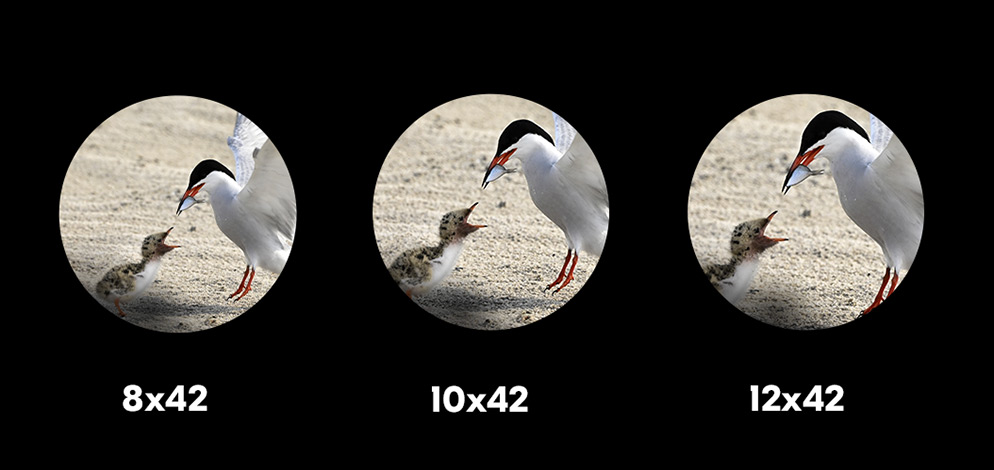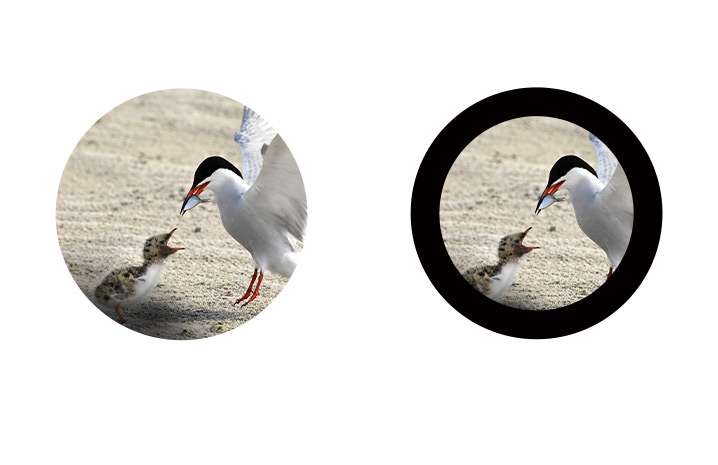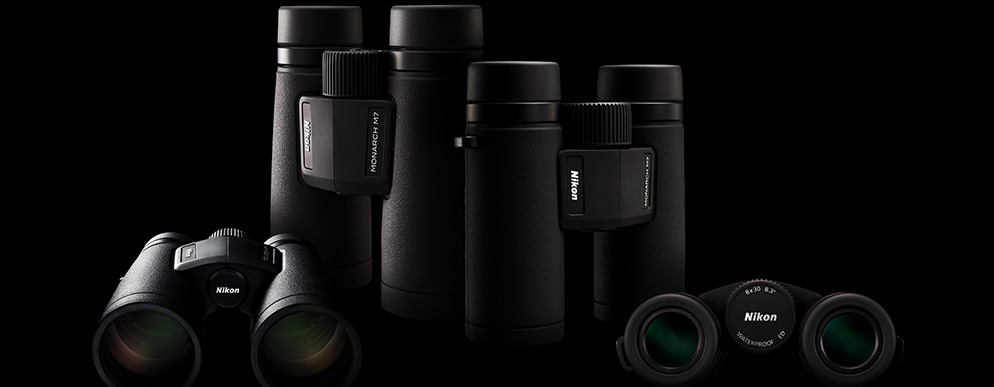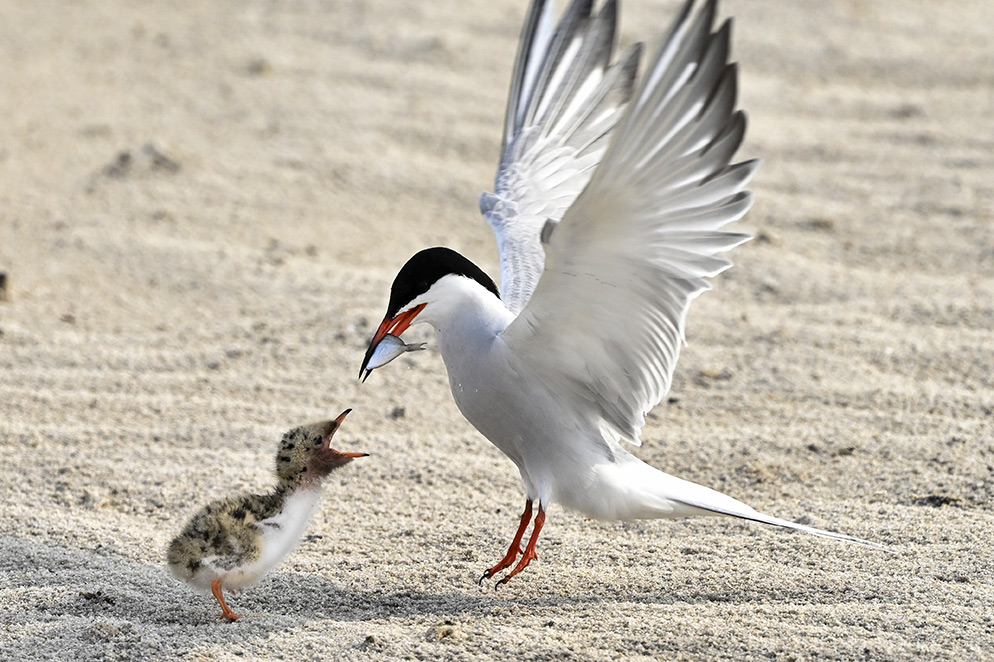Binoculars for Bird or Wildlife Watching
Selecting the right pair for your needs
The right pair of binoculars should fit your needs—magnification, amount of light gathering capability and with the design and build for what you intend to do with them. For example, a pair of binoculars ideal for birdwatching or viewing wildlife would magnify the scene, let in enough light for the time of day you plan to use them (dusk and dawn vs. mid-day sun); and incorporate other features such as being waterproof or small enough to wear comfortably on a strap all day while hiking.
When selecting a pair of binoculars, remember that in addition to the various technical features available, you'll also want to make sure that the binoculars you choose are comfortable in your hands and as you look through them. And lastly, that they fit the pricepoint you want to spend.
Comparison showing the magnification differences between a pair of 8x42, 10x42 and 12x42 binoculars, with 8x, 10x and 12x magnification respectively.
Magnification
Look for a magnification between 8x–12x. Higher than 12x, you can induce hand movement, which will make viewing through the binoculars uncomfortable (unless you use a tripod). If you’re mostly viewing wildlife in forested areas, 8x – 10x should work well, while 8x – 12x are ideal for lakes and tidelands.
Generally, the higher the magnification, the narrower the field of view. On the other hand, binoculars with a lower magnification provide a wider field of view and make it easier to locate objects. For example, binoculars with a wide field of view makes it easier to follow the movements of birds.
(left to right) The normal view of a scene through a pair of binoculars vs. the view with vignetting of the image due to incorrect eye relief for a user wearing glasses.
Helpful hint for eyeglass wearers
For folks who always wear their eyeglasses, look for high-eyepoint binoculars with longer eye relief, such as 15mm or longer; but with a minimum eye relief of at least 10mm.
The objective lens(es) of a pair of binoculars determines how much light is let in while viewing. The effective diameter of the objective lens(es) of these Monarch M7 8x30 binoculars is noted by the number 30.
Large effective diameter of the objective lens
The effective diameter is the inside diameter of the objective lens frame. So on a pair of binoculars that are 8x42, the effective diameter of the objective lens is 42mm. Given the same magnification, the larger the objective diameter, the greater the light-collecting power. What this means is that between binoculars of 8x30 and 8x42, the 8x42 model will have greater light collecting power, even though they are both the same magnification: 8x. Benefits of this are a brighter image and higher resolution.
Be aware that the use of a tripod for binoculars over 50mm is recommended, to reduce unstable images and uncomfortable viewing due to hand movement.
Quick tips – using binoculars for birdwatching
Set up your binoculars for your eyesight.
Minimize hand movement when you hold binoculars. Grip the binocular tubes with both hands and brace your elbows against your body. If there’s a tree or wall near you, lean your body against it to maintain a steady view. Supporting your binoculars on a fence or rocks is also effective. You can also use binoculars with a tripod—if they're tripod compatible models, you’ll just need an adapter to mount them on the tripod.
Start by viewing something that’s easy to observe with the binoculars—a distant, unmoving object in a wide, open space. Look at that object and focus on them. Repeat this until you become accustomed to it and gradually shift your focus to objects that are closer to you.
Next, try watching a fairly large bird, one that doesn’t move around much and that you can easily see with the naked eye. Once you’re used to this, further challenge yourself with “small, moving birds nearby.”
Now when you want to view a bird with your binoculars, spot the bird with your eye and, fixing your gaze (keeping your eyes on the bird), swiftly bring your binoculars up to the level of your eyes and look through them.
If there’s something in your field of vision, such as a tree or branch that you can easily find again, use it as a reference point to be able to find the bird again.
Bird Watching Etiquette
-
When viewing birds in the wild it is just as important to use similar practices that you would when photographing birds or other wildlife.
-
Observe from a suitable distance.
-
Don’t disturb the natural habitat of wild birds. Especially take care when birds are nesting with their young.
-
Be careful not to make any loud noises.
-
Be considerate of others viewing or photographing wildlife nearby.

